Solid-state drives (SSDs) have become the industry standard for computer storage solutions in modern computing because of their reliability and blazing-fast speeds.
If you’ve been wondering, “How to check what SSD I have?” you’ve come to the right place. This guide will walk you through various methods to show you how to find an SSD on a PC.
Let’s dive right in!
What Is an SSD?
A solid-state drive is a data storage device for computers and other electronic devices. SSDs use NAND flash memory to store data instead of spinning disks, which are used by traditional Hard Disk Drives (HDDs) to read and write data.
SSDs have several advantages. It offers faster data access speeds, increased durability, less power consumption, and a smaller physical dimension.
Users who want speed and efficiency in their computing tasks prefer computers with SSDs because of their enhanced responsiveness and performance.
Did you Know?
According to Backblaze’s annual report in 2022, the annualized failure rate (AFR) for hard drives increased over the last three years due to age. That’s because hard drives, like any hardware, are more likely to fail as they age.
That’s why we recommend Auslogics BoostSpeed to help optimize your system and manage storage, which can reduce wear and tear on your hard drive. The software even has a unique algorithm to optimize SSDs.
Learn more: Speed Up Slow Computer: Auslogics BoostSpeed 13.
How to Tell if You Have an SSD or HDD?
There are various ways to find out how to tell if you have an SSD or HDD. Here’s how to check if you have an SSD drive:
Take a Note:
It’s important to understand the key differences between HDDs and SSDs. HDDs use an arm and spinning disks, whereas SSDs use flash memory. This difference impacts durability, speed, and other aspects.
Read this guide for more: SSD vs HDD: What’s the Difference.
Method 1: Use the Device Manager
If you want to know the answer to the question, “How to find what SSD I have,” use the Device Manager. Here’s how to do it:
- Type “Device Manager” in the search bar and click on it.

- Search for “Disk drives” and click the drop-down menu to find your drive brand.
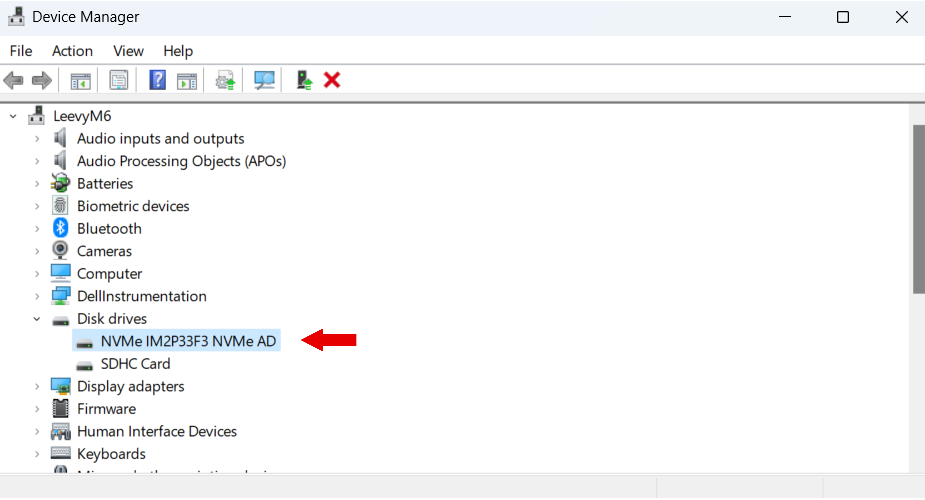
- You can right-click on the drive and select “Properties” to find more information about the drive.
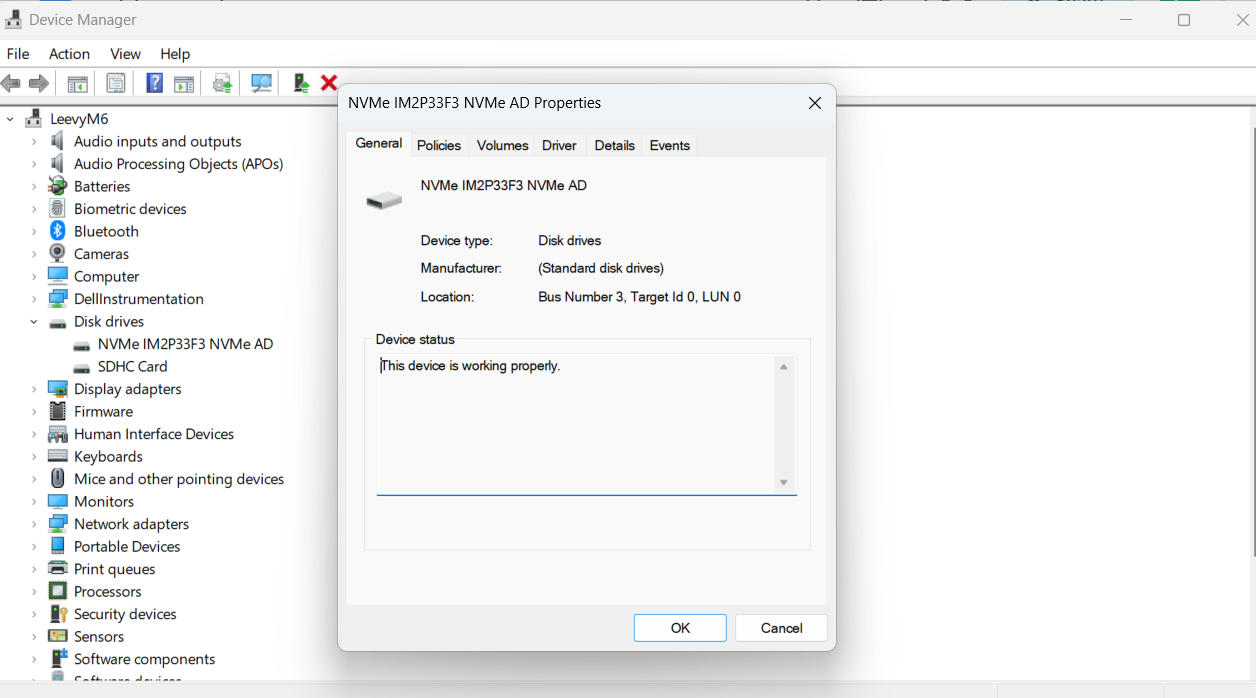
Method 2: Use the Command Line
Another fast way to know where to find an SSD on a PC is to use the Command Prompt or PowerShell.
Here’s how to use PowerShell or the Command Prompt to check whether you have an HDD or SSD. Regardless of the method you use, you’ll get the same results:
- Type “cmd” or “PowerShell” in the search bar and click to open. Alternatively, press “Windows logo + R” to open the Run dialog box.
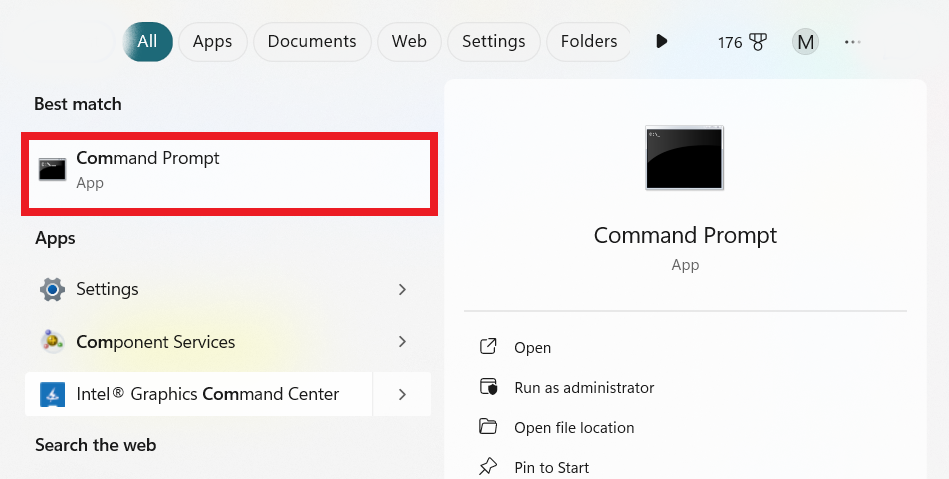
- Type “wmic diskdrive get caption, firmwarerevision” and press “Enter.”

You’ll see the type of drive you have. You’ll also see the model name and the amount of storage the SSD or HDD offers.
So, if you want to know how to find SSD on a laptop, use the command line.
Related: Windows Command Prompt: Most Useful Commands
Method 3: Use Disk Management
Here’s how to find an SSD on Windows 10 using Disk Management:
- Type “disk management” in the search bar and click to open.
- Click on “Create and format hard disk partitions.”
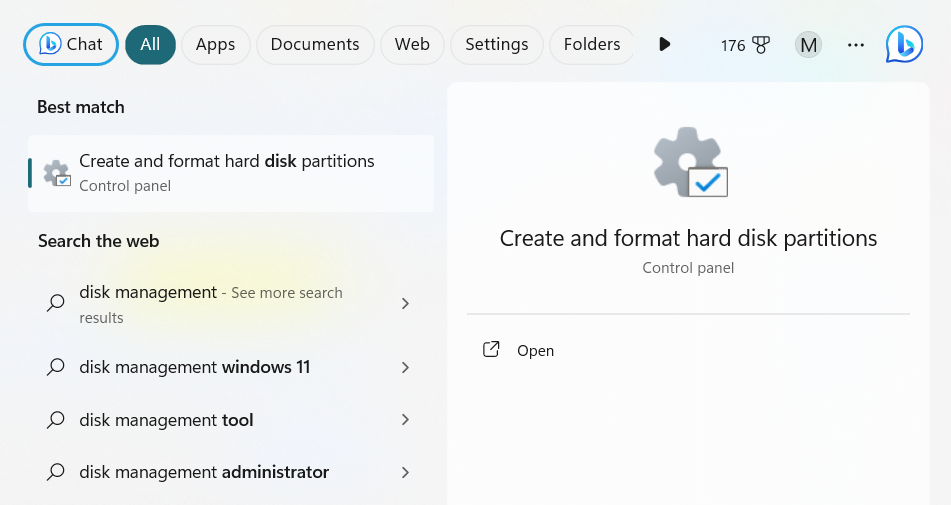
- Right-click on the volume you want to check.
- Search for the “Hardware” tab, and search the available drives.
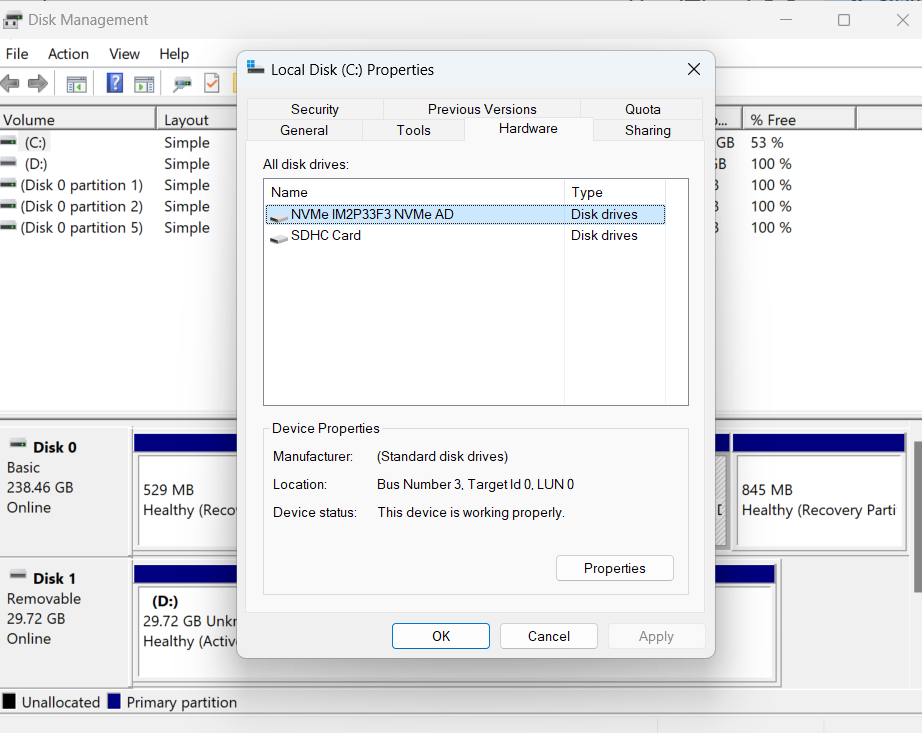 You can use this method to check your hard drive if you want to know the answer to the question, “How to check what SSD I have?”
You can use this method to check your hard drive if you want to know the answer to the question, “How to check what SSD I have?”
Method 4: Use Third-Party Tools
Even though the above methods can help you know how to find an SSD on a PC, Auslogics BoostSpeed offers the quickest way to do that.
You can learn much about your computer, including the kind of drive you have, under the “System Information” section. Here’s how to do it:
- Download Auslogics BoostSpeed from the official website.
- Install the executable file and check all the required sections.
- After installation, click “All Tools” and select “System Information.”
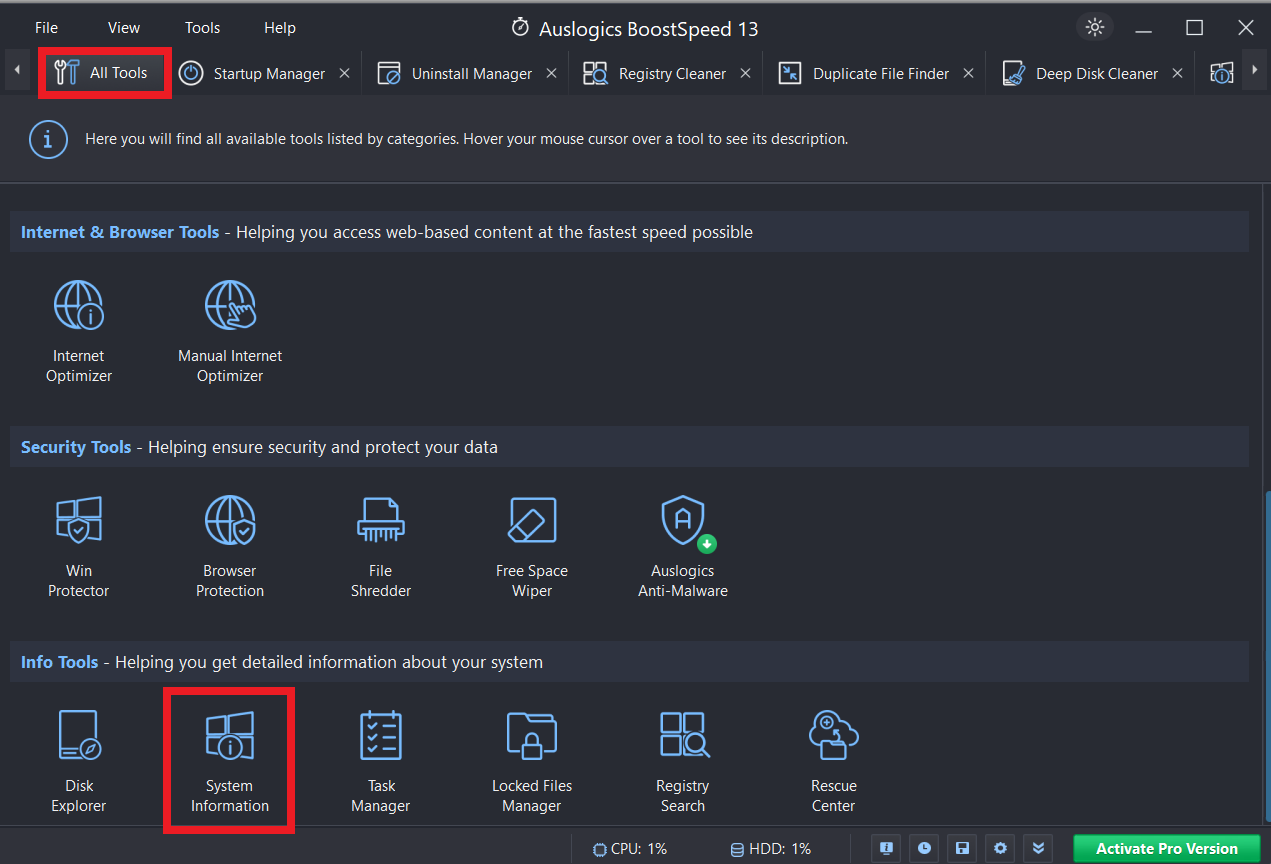
- Click on “General” and you’ll see the information on your PC, including the drive you use.
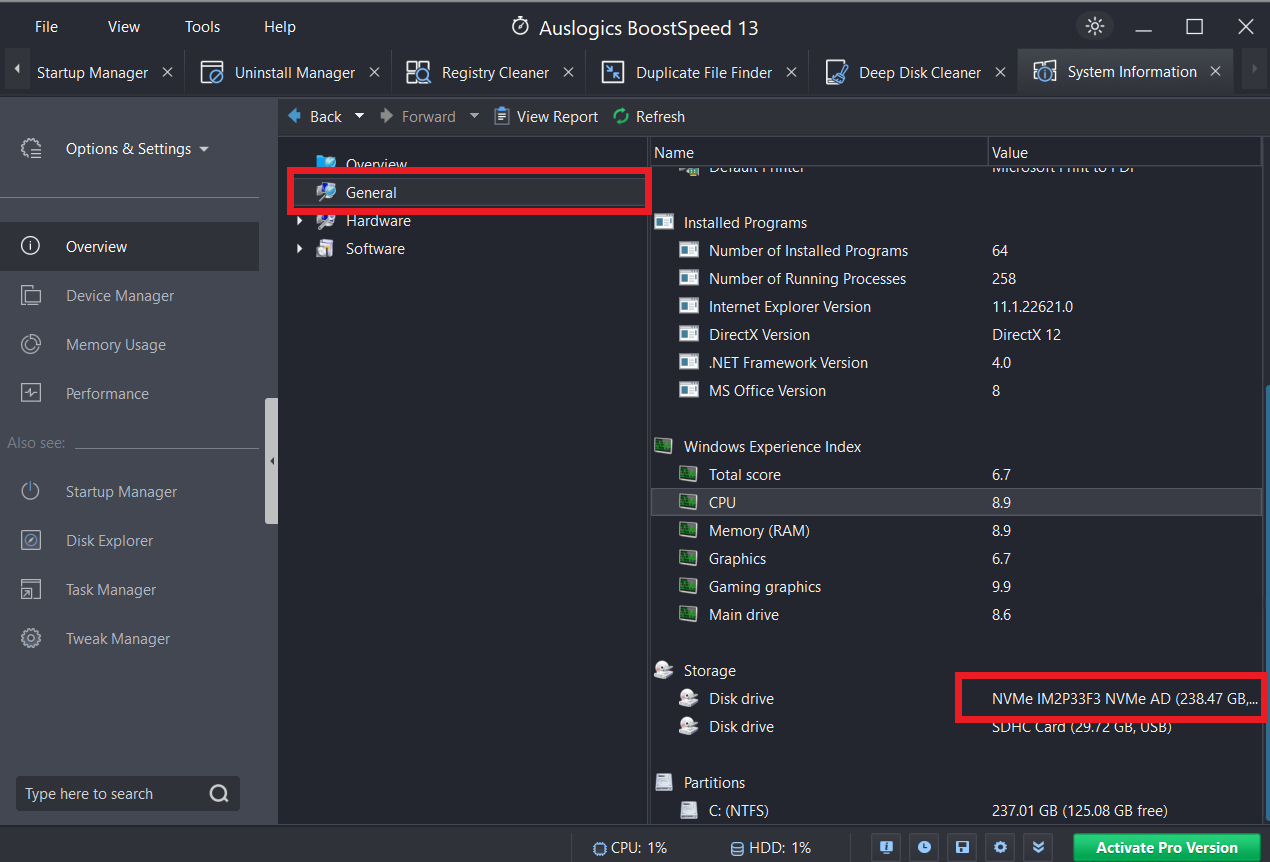
Related: Get the Most out of Auslogics BoostSpeed Free Trial
Method 5: Checking Your SSD on MacOS
Follow the below steps if you want to check your SSD on MacOS:
- Press the Apple logo and click “About This Mac.”
- Click “More Info” to open the settings menu.
- Search for “General” and click “System Report” at the bottom.
- Search the list and click on “Storage.”
- You’ll see all the information you need.
Your Mac likely has an SSD unless it’s an older model. If you need more storage than what’s built-in, you can easily add more using an external hard drive.
Also Read: How To Check How Much RAM You Have
Understanding SSD Specifications
Knowing the important details that affect an SSD’s compatibility and performance is crucial when selecting one for your computer. Here are three essential factors to think about:
1. Capacity
The amount of data that an SSD can store depends on its capacity. SSDs are available in multiple capacities, from 128GB to multiple terabytes (TB). Select a capacity based on operating systems, apps, and data storage requirements.
2. Type (SATA, NVMe, M.2, etc.)
The type refers to the form factor and interface of an SSD. Popular types include M.2 (compact), NVMe (ultra-fast), and SATA (widely compatible).
The type affects your motherboard’s physical compatibility and data transfer speeds.
3. Manufacturer and Model
Its manufacturer and particular model can influence SSD’s performance and reliability. Reputable companies like Kingston, Crucial, and Samsung usually make SSDs of the highest quality.
Research and reviews can help you get the ideal SSD for your requirements.
Related: SSD Optimization on Windows 10/11
What to Do with the SSD Information
After answering the question, “How to see what SSD I have?” here are some of the things you can do with the information:
1. Optimize Your PC
Understanding the type of SSD you have (SATA, NVMe, or M.2) will help you optimize your system. For example, if you have an NVMe SSD, make sure it’s used for your operating system and commonly used apps to use its high-speed capabilities fully.
2. Manage Storage Efficiently
Knowing the capacity of your SSD makes it easier for you to monitor available space. If you want to keep your PC’s performance at its best, regularly remove unnecessary files and move data that isn’t used frequently to external storage.
3. Consider Upgrades
If the capacity of your SSD is limited, you can budget for additional improvements. When you know the manufacturer and model, it makes it easier to find a compatible SSD with a bigger capacity SSD.
4. Implement a Backup Strategy
Consider implementing a solid backup plan, depending on the capacity and dependability of your SSD. To protect against possible data loss, make a backup copy of all essential data to an external device or cloud storage service.
Related: The Ultimate Guide to Windows 10 Backup and Restore
SSD Maintenance Tips
After learning how to find an SSD on Windows 10, you should know how to maintain it to prolong its lifespan. Here are some crucial tips:
1. Update Your SSD Firmware
The primary purpose of firmware updates is to fix problems and add new features to essential products.
Like every computer, tablet, and smartphone has a unique code that determines how it works, your SSD includes firmware that controls how it works.
These updates can fix problems with performance, strengthen security, and make the latest hardware and software more compatible.
2. Enable TRIM
TRIM is an essential SSD function that lets the operating system tell the drive which data blocks are no longer being used. This helps to preserve the SSD speed.
TRIM is usually activated by default on Windows. However, if you want to ensure it’s active, open the Command Prompt with administrator rights and type the following command: “fsutil behavior set DisableDeleteNotify 0.”

3. Scan for Malware Regularly
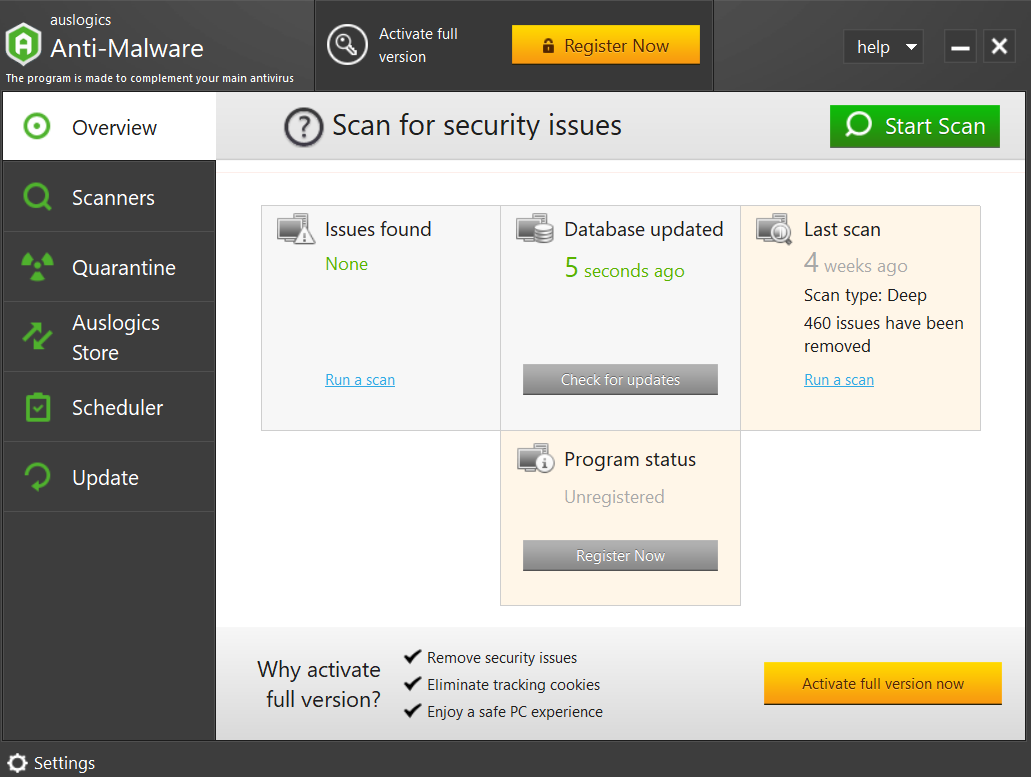
Use reliable antivirus and anti-malware software like Auslogics Anti-Malware to do routine scans to protect your SSD and system against any dangers. Malware can corrupt data and impair the performance of your SSD.
Related: Auslogics Anti-Malware: Features and Reviews
4. Monitor the Temperature
Pay attention to the SSD’s temperature. Make sure your computer is properly ventilated to maintain a safe operating temperature because SSDs can get hot under intense demand.
High temperatures can cause decreased efficiency and eventual harm to the disk.
Related: How to Check SSD Health: A Guide for Windows 10 and Windows 11 Users
Conclusion
Your computer’s SSD is an essential part, and knowing about it will make computing easier and more effective. We hope this guide has answered your question, “How to see what SSD I have?”
It’s crucial information that tells what your computer is capable of. Thankfully, you can find the answer in minutes, and it’ll help you make an informed decision, especially if you’re trying to upgrade your SSD.
FAQ
How to Check Which Drive is an SSD?
First, press “Windows logo + E” to open File Explorer and click on “This PC.” Right-click on the drive you want to check and select “Properties.” Go to the “Hardware” tab in the properties window to see a list of connected devices for your computer. When you select the SSD from the list, its details will appear.
How to Check SSD Storage?
Open the File Explorer and click “This PC.” Right-click on the preferred drive and select “Properties.” You’ll see an overview of your storage usage in the pie chart that shows you how much space is used and how much is left on your SSD.
Can I Upgrade My SSD If I Know Its Specifications?
You can upgrade your SSD if you know its specifications. There are a few ways to do this. First, find out the current SSD’s size and interface. M.2 and 2.5 inches are standard sizes, and the interfaces may be SATA or NVMe.
With this information, you can buy a new SSD that fits these requirements. Make sure the capacity of the new SSD is equal to or higher than what you require for storage.
What Should I Do If My SSD Is Nearing Its Capacity?
It’s crucial to avoid data loss and performance issues as your SSD nears its capacity. First, remove unnecessary files and transfer large or infrequently used data to external storage.
Consider installing a secondary disk or upgrading to a higher-capacity SSD if space is still an issue. You can automate some processes related to space management by turning on Windows Storage Sense.



